Capital Bear: honest review, trader feedback and scam signs (2025)
“One click, five seconds – 95 % profit!” Sounds too good to be true? That is exactly how Capital Bear advertises its services, promising easy money on the financial markets. The company lures beginners with aggressive marketing claims – from a +200 % deposit bonus to fairy-tales about millions of successful clients. But how real are those promises? With 11 years of trading under my belt, I’ve seen this before and know: when a platform offers risk-free riches, you should be on guard.
Capital Bear is making plenty of noise: some reviews praise the platform’s simplicity and the USD 10 minimum deposit, while others sound the alarm, calling the broker a scam. The goal of this review is to give a full breakdown of Capital Bear: what its trading conditions look like, whether it holds any licences, what real traders say and, most importantly, whether your money is safe. We’ll scrutinise regulation, client feedback and common complaints (such as withdrawal problems), compare Capital Bear with well-known licensed brokers like IC Markets, Pepperstone, IG Markets, IQ Option, and deliver an objective verdict. Read to the end and you’ll have the full picture to decide whether this broker is worth your trust.
Contents
- General information about Capital Bear
- Regulation & licensing – reliability in doubt
- Reputation & client reviews – what traders say
- Capital Bear account types – offers and pitfalls
- Trading instruments & products
- Trading platform & technology
- Deposits & withdrawals
- Bonuses & promotions – sweet trap
- Customer support – does it exist?
- Warning signs of Capital Bear fraud
- Comparison with licensed brokers
- Frequently asked questions (FAQ)
- Conclusion – final verdict
General information about Capital Bear
What is Capital Bear? It is an online broker marketing itself as a “modern investment platform” for trading everything from Forex and stocks to crypto-assets and even binary options. The company claims to cater to both beginners and seasoned traders, promising a user-friendly interface and a broad choice of instruments.
- Year founded: Capital Bear began operating around 2020–2021 – very young by industry standards.
- Registration & jurisdiction: The company is incorporated offshore. It names Saint Vincent & the Grenadines as its place of registration, while its legal address points to Nevis (St. Kitts & Nevis) – Lighthouse Trust Nevis Ltd, Suite 1, A.L. Evelyn Bldg, Charlestown. This geography is a classic hallmark of an offshore broker. You will not find offices in major financial centres or transparent owner information. Who really stands behind Capital Bear is unknown, which immediately lowers trust.
- Services & markets: The broker advertises access to many assets: dozens of Forex pairs, popular stocks (Tesla, Netflix, Microsoft, etc.), commodities (oil, gold, silver), stock indices and ETFs, plus cryptocurrencies. Capital Bear especially pushes high-risk binary options and their variants (Digital, Blitz) with promised returns of up to 90 % per trade. In practice the platform seems geared toward novice investors attracted by the idea of quick gains on simple bets.
- Audience: Capital Bear’s ads stress that the platform “suits beginners” with an easy interface and educational materials, yet it also woos experienced traders by mentioning leverage up to 1:500, technical indicators and analytics. In reality, such offshore brokers mostly work with novices who lack experience spotting fraud. The company boasts incredible popularity figures – “97 million users in 213 countries” on Trustpilot or even 111 million elsewhere. These claims look fantastic: by comparison, global giant eToro has about 30 million users, yet this little-known platform allegedly outshines industry leaders. That is the first alarm bell indicating Capital Bear’s marketing is heavily embellished.
- Information transparency: The absence of public details about management and regulatory documents is worrying. The website offers no executive bios and no corporate history – only generic phrases. Legal documents are buried in the footer in small print, while key terms (fees, withdrawal procedures) are either undisclosed or hard to find. Lack of transparency is a typical trait of dubious firms.
Takeaway: Capital Bear is a young offshore broker with no established reputation or track record. It aggressively attracts clients with colourful promises and an impressive list of markets, yet its opaque structure and unrealistic marketing raise serious doubts. Next we’ll see whether Capital Bear’s activity is backed by solid licences or whether it is just another shadowy offshore broker.
Regulation & licensing – reliability in doubt
Does Capital Bear hold any financial licences? In short – no. The broker is not regulated by any strict authority such as the UK’s FCA, Australia’s ASIC, Cyprus’s CySEC, the US SEC and so on. Checks show Capital Bear holds no valid licence – its name doesn’t appear on the databases of reputable regulators.
Officially Capital Bear is registered in a jurisdiction that does not issue Forex licences (Saint Vincent & the Grenadines). Companies are simply incorporated there without oversight of their market activity. Essentially Capital Bear operates outside the legal framework of strict jurisdictions – nobody audits its honesty. The broker may claim some “offshore licence”, but such papers usually mean nothing. For example, WikiFX flags Capital Bear as “No licence” with a high risk level for clients.
Why is non-regulation dangerous for traders? A top-tier licence guarantees the broker follows tough rules:
- Segregation of client and company funds. A licensed broker must keep traders’ money in separate bank accounts, not mixing it with corporate funds. This protects investors from potential fraud or bankruptcy. Capital Bear has no such obligation – once you deposit, your money is fully under its control.
- Compensation schemes. In advanced jurisdictions brokers contribute to investor protection funds. For instance, CySEC’s fund covers up to €20 000; the UK’s FCA up to £85 000. Offshore brokers offer no such guarantee: if Capital Bear vanishes tomorrow, getting your money back is nearly impossible.
- Operational oversight. A regulator ensures the broker executes trades at market prices, follows advertising rules, discloses risks, etc., and also handles client complaints. With Capital Bear no one monitors what happens inside the platform. The company can freely manipulate quotes or impose impossible terms while the client has nowhere to appeal – the regulator simply doesn’t exist.
- Ban on toxic practices. Serious regulators have long banned binary options for retail traders (EU, US, Australia) due to high risk and frequent scams. They also cap leverage (e.g., 1:30 in the EU), forbid deposit bonuses and other aggressive promotions. Operating offshore, Capital Bear happily does all that a regulated broker cannot: offers 1:500 leverage, 200 % bonuses, pushes binary options, etc. That shows the broker chose the shadows precisely to use these risky tactics.
Capital Bear has already appeared on regulator blacklists. In 2022 Malaysia’s Securities Commission (SC) added capitalbear.com to its Investor Alert List as an entity conducting unlicensed securities activity. In plain English: Capital Bear is not authorised to provide financial services, and dealing with it is unsafe. Such official warnings are issued for good reasons.
Licensed vs. offshore broker: The gap is huge. For the former, client protection and reputation come first; for the latter, unrestrained freedom that often leads to abuse. Tellingly, Capital Bear scores just 1.5 out of 10 on an independent safety rating. Key cons are lack of regulation, no negative-balance protection and a short operating history. Experts warn plainly: working with an unregulated broker means elevated risk of fraud and withdrawal issues.
Takeaway: Capital Bear holds no licence from any reputable regulator and operates outside strict rules – a blatant red flag. Some regulators have already issued warnings. With no oversight, Capital Bear’s clients are legally unprotected. If disputes or non-payments arise, there is virtually nowhere to turn. Understand this clearly before opening an account – the risk of losing money with an offshore broker is far higher than with a licensed one.
Reputation & client reviews – what traders say
What do real clients discover about Capital Bear? The picture starkly contrasts with the official ads. According to its own website, millions of investors are happy and its Trustpilot rating is near 4.5 / 5. Yet a closer look reveals the upbeat image is engineered, while honest trader opinions expose multiple scam warnings.
On Trustpilot Capital Bear does show about 4.4 / 5. But note: the company actively moderates its profile, posting its own glowing description and replying to reviews. You will not see a single one- or two-star rating (already suspicious – even top brokers have unhappy clients). All 60+ comments are positive or neutral, many reading like templates. It appears a large share of praise is written by fake accounts or bought for rewards – a common tactic of fraudulent firms to bury negative feedback.
Dive deeper – forums, social networks, independent reviews – and you find the opposite: genuine Capital Bear reviews are largely negative. Clients report the same issue: withdrawing money is almost impossible. A few telling quotes:
- Unable to withdraw funds. Requests sit unprocessed for weeks or are simply declined.
- They promised a bonus but locked my account. After accepting a deposit bonus, the trader’s account was frozen for alleged “bonus-policy violations.”
- “Customer support disappeared after my third deposit.” Once a sizeable withdrawal was requested, managers stopped answering.
- “They manipulate trades during high volatility.” Suspected price manipulation closes trades at non-existent quotes, turning profits into losses.
On financial forums and review sites (ForexPeaceArmy, Reddit, etc.) more detailed stories emerge. The pattern: agents persuade clients to deposit heavily, sometimes showing early “wins.” But when the client tries to withdraw profits, trouble starts. Withdrawals drag on for months, dashboard status stays “processing,” support makes empty promises. In some cases the trader is asked to pre-pay a “tax” or fee (10–20 % of the withdrawal) – after paying, nothing happens anyway. Many never receive either profits or even their original deposits back.
Meanwhile positive comments often read suspiciously flowery and generic. For instance, several posts from different countries written at the same time praise “personalised approach” and “perfect service”. Quote: “Thanks to this company I’m inching toward financial heights. I admire customer support – they work closely with me to achieve my goals.” That sounds like marketing copy, not a real user review.
Overall, Capital Bear’s reputation seems carefully polished by its own team, while authentic assessments label it a scam. In one authoritative review the broker scored 1.5 / 10 reliability with “Low security level,” concluding: “If a broker delays or blocks withdrawals, that’s a major red flag.” That is exactly what we observe: the vast majority of candid reviews cite withdrawal problems and dishonest tactics.
Review summary: Despite a seemingly high rating on some platforms, most real traders view Capital Bear extremely negatively. Typical grievances are blocked withdrawals, bonus traps and vanishing support once deposits arrive. All signs point to Capital Bear being a fraudulent operation (though not yet proven in court). Trusting flashy ads and paid reviews is risky – better heed the warnings from harmed clients.
Capital Bear Account Types – Offers and Hidden Pitfalls
Capital Bear lures customers with a low entry threshold and several account tiers. The company advertises a minimum deposit of just $10, after which you can upgrade to more advanced accounts with extra perks. Let’s examine what accounts the broker promotes and where the catch might be:
Officially listed account types:
- Basic – the starter account. Public sources indicate the minimum deposit for a real Basic account is about $250. You get platform access and introductory learning materials – essentially a “beginner level” with no special bonuses. (Note: the site claims you can begin with $10, theoretically allowing micro-lot or binary-option trades. However, according to reviews, a full-fledged Basic account usually requires a far larger deposit – tens or even hundreds of dollars.)
- Silver – the next tier. Requires a larger top-up (the exact figure is not disclosed but is usually several thousand dollars). Marketing promises tighter spreads and a personal account manager, i.e. supposedly better trading conditions and a dedicated support rep.
- Gold – a premium account for still bigger investments. Claimed benefits include a deposit bonus (up to +100% or +200%), faster withdrawals (priority request processing) and extra risk-management tools. Sounds tempting: deposit a hefty sum and get VIP treatment.
- VIP / Platinum – the top category. Allegedly for deposits starting from tens of thousands of dollars. Includes bespoke trading strategies, analyst signals, maximum bonuses, first-in-line withdrawals and other exclusive services. In short, you are promised the white-glove approach.
The reality and hidden clauses:
- Imaginary improvements. Capital Bear may promise ultra-tight spreads or zero commissions on a Gold account. Yet without a licence and external oversight there is no guarantee these conditions are honoured. You trade on a closed platform where the broker sets any spread it likes – it still earns from your positions because trades are likely matched internally rather than on the interbank market. Those “razor-thin spreads” are often just a marketing wrapper.
- The “personal manager” is a salesperson, not a mentor. Many reviews note that assigned managers relentlessly push clients to deposit more. You may get repeated calls pitching a “unique opportunity” to top up, promising bonuses or risk-free trades. But once you ask to withdraw funds — or empty your balance — your “manager” vanishes. The real job is extracting the maximum deposit, not helping you profit.
- Bonuses with strings attached. Deposit bonuses on Gold/VIP accounts are especially dangerous. Example: a +200% bonus – you deposit $1 000, the platform adds $2 000 “as a gift”. A novice is thrilled: the balance shows $3 000! Hidden in the agreement (rarely read) is a requirement to generate turnover dozens or hundreds of times bigger than the bonus before any withdrawal. Until you “work off” the bonus the broker may refuse to release profits – or even your original deposit. In practice the bonus becomes a trap: you either keep trading until the account is wiped out, or try to withdraw and are blocked for non-fulfilment. Scammers love huge bonuses: they make clients deposit more, then use the bonus clause to deny payouts. Sadly, many reports confirm that after accepting a Capital Bear bonus people could not recover anything.
- “Priority withdrawals” and other VIP perks are fiction. The broker states VIP clients receive payouts without delays. But if the company’s policy is not to pay, no status helps. There are testimonies of large investors (tens of thousands deposited) waiting months or threatening lawsuits before seeing any money – and some never got paid at all. Thus the line between Basic and VIP disappears when it comes to the broker meeting obligations. Everyone is in the same boat: funds with an offshore broker are uninsured and even VIP status guarantees nothing.
The $10 entry hook: Capital Bear stresses that you can open a live account with only $10. That is indeed a rock-bottom threshold, typical for binary options where a stake may be $1. It is nowhere near enough for proper Forex trading, but it suffices for option bets. The broker likely lowered the bar deliberately to attract as many people as possible (“just ten bucks – why not try?”). Yet with $10 you will hardly trade seriously, while giving scammers a foot in the door to your wallet. Once you register and deposit that $10, they start ringing you to “top up for real profits”. Many beginners fall for it and soon wire hundreds or thousands. So the $10 figure is mainly a psychological lure that reduces the barrier to entry.
Bottom line: Capital Bear markets several account types (Basic, Silver, Gold, VIP) that differ by deposit size and advertised privileges. In practice these differences are cosmetic. Neither “personal service” nor “enhanced conditions” help if the broker is fundamentally set against the client. Bonuses are a separate minefield that usually harms traders. The $10 minimum is a shiny hook to reel in novices. Stay vigilant: with a fraudulent broker any promise is simply a tool to drain more money, not to create real value for the customer.
Capital Bear Trading Instruments and Products
One selling point Capital Bear highlights is its broad range of tradable instruments. The broker portrays itself as a financial supermarket: currencies, stocks, crypto, commodities, ETFs and more. Let’s unpack what is actually on offer and why the list is not always an advantage.
Available asset classes:
- Forex – major and minor currency pairs. According to the description you can trade popular pairs (EUR/USD, GBP/CAD, USD/JPY, etc.) including some exotics.
- Stocks – shares of leading global corporations. Examples given: Tesla, Netflix, Alibaba, Microsoft, Disney and so on. Reviews mention roughly 50 stocks available. By comparison, top-tier competitors offer thousands, so 50 is modest but covers household-name issuers.
- Commodities – classic raw materials: oil (Brent, WTI), gold, silver and others. Capital Bear calls them “hot assets” worth trading.
- Indices & ETFs – there is said to be access to ETFs (exchange-traded funds) and stock indices such as the S&P 500, Nasdaq, Dow Jones, DAX, etc. Details are sparse but a few headline indices are likely present.
- Cryptocurrencies – popular coins like Bitcoin, Ethereum and others are listed. Adding crypto-CFDs is standard nowadays.
- Blitz / Digital / Binary Options – Capital Bear’s signature feature. The broker offers three types of fixed-return contracts: classic binaries, digital options (slightly different conditions) and Blitz options. Marketing claims a maximum payout up to 90% of the stake. Around 54 underlying assets are quoted for options, ranging from currencies and commodities to crypto.
Why does such a catalogue attract newcomers? Variety creates the illusion of a serious, global platform. You can diversify, test different markets – seemingly plenty of room to trade. Binary options are especially seductive: simplicity (just predict up or down in minutes), high potential profit (up to 90% return) and low entry cost (trades from $1). Promotional pages shout: “1 click. 5 seconds. 95% profit” – clearly about their Blitz options with ultra-short expiry. To anyone unfamiliar with finance it sounds like a casino: stake a dollar, get back almost two in seconds.
Why are binary options a red flag?
Binary options are an extremely risky product, bordering on gambling rather than investing. Many jurisdictions have banned them. Statistics are ruthless: 80–90% of clients consistently lose money. With each trade the expected value is negative – even if the chance of guessing is 50/50, a 90% payout means you statistically lose. The broker always wins. History is full of “bucket shops” manipulating quotes and timing so clients lose. Capital Bear focuses heavily on binaries – this is evident from its marketing and platform layout (it even brands itself a “binary trading platform”). For a market professional that is immediately a red flag: respectable companies abandoned binaries years ago; here they are the main attraction. It suggests the business model is to trade against the customer. Your loss is their profit.
Spreads, fees, trading conditions:
Transparency at Capital Bear is extremely low. The website lacks a clear spread table for each asset, no information on swaps or other charges. That is odd – legit brokers flaunt their low spreads. The opacity likely means spreads are variable and wide, adjusted at the broker’s discretion. Reviews mention withdrawal fees of up to 10% of the amount – enormous (no regulated broker charges a tenth just to send your own money). There is also an inactivity fee of $10 per month after 90 days without trading. These details surface only in reviews; the broker does not display them prominently. Consequently, your trading costs are unknown up-front, violating basic transparency standards.
Leverage:
Capital Bear lets you magnify trades with leverage up to 1:500. To a novice that may sound great: with $100 you control $50 000. Professionals know excessive leverage is a fast route to ruin on the slightest adverse move. Regulators in Europe and Australia cap retail leverage (usually 1:30) precisely to protect clients. Offshore brokers, on the other hand, often dangle 1:500 or 1:1000 to entice thrill-seekers – most quickly blow their deposits, which is profitable for a broker acting as a bookmaker. Thus 1:500 at Capital Bear is a double-edged sword: apparent freedom that can tighten like a noose around an inexperienced trader.
Conclusion: Capital Bear indeed offers many markets – Forex, equities, crypto, commodities, option contracts. Yet the abundance is bait. The strongest emphasis is on binary options, banned in regulated countries for fraud and extreme risk. The absence of transparent spread and fee data shows trading is on terms fully controlled by the broker (whatever they may be – you learn only when it’s too late). Sky-high 1:500 leverage and a rock-bottom deposit act as magnets for adventurous yet unprotected traders. In the hands of an untrustworthy company this arsenal is designed to maximise revenue from clients, not provide a fair service. Exercise caution: it is often safer to trade a limited but honest set of instruments with a licensed online broker than a whole “casino” of assets with an offshore bucket shop.
Trading Platform and Technology
What can you trade on Capital Bear? The broker doesn’t rely on popular third-party platforms such as MetaTrader 4/5 or cTrader. Instead, it offers its own software suite: a web terminal (browser access), a desktop version, and the CapitalBear mobile app for smartphones. The apps are developed by an affiliated company, Digital Smart LLC / CY Ltd (we saw this name in the Google Play listing and the Cyprus legal address).
Key features of Capital Bear’s proprietary platform:
- Clean interface: The marketing highlights a friendly, straightforward UI with customizable layout, charts, etc. It is designed so beginners aren’t scared off by complex terminals—everything feels intuitive, “almost like a game.”
- Multi-tool environment: The platform bundles technical indicators, oscillators, news feeds, and video lessons—positioning itself as an all-in-one solution. You can analyse the market, place orders, and learn without leaving the app.
- Mobile app: Available on Google Play and showing 1 + million installs (according to the store). Mobile trading is convenient, and an app often inspires confidence (“if it’s on Google Play it must be legit”). Of course, that’s a false sense of safety: Google doesn’t verify financial licences and the store is full of rogue-broker apps.
- No MetaTrader support: Nowhere does Capital Bear mention MT4 or MT5—the industry’s most common terminals. Some reviews claim the company “announces MT5 compatibility,” yet in practice every client is pushed to use the in-house platform. That matters: MetaTrader is an independent product whose quotes and execution can be at least partially verified—there are plug-ins to record data, etc. A broker’s closed platform is a black box. The client has to trust that prices are fair and trades are actually executed.
- Room for manipulation in a closed system: Seasoned traders are wary of proprietary platforms from unknown brokers because the company controls the entire trading process. The broker can draw any candle on your chart, shift a quote to hit your stop-loss, or keep your take-profit from triggering. It is hard to prove because no external benchmark exists inside the terminal. In a dispute you can’t present a MetaTrader log or a Bloomberg snapshot—you only see what the broker shows. Some traders already suspect Capital Bear of such tricks (“price spikes during volatility”). It’s plausible: there is no regulator oversight or external liquidity.
- No algorithmic trading support: Custom terminals usually lack expert-advisor connectivity, algos, or custom indicators that are commonplace on MT4/MT5. For advanced traders this is a drawback: their favourite robots and automation scripts won’t work. Perhaps Capital Bear doesn’t care—the target audience is mostly non-professionals. For the company the absence of an API is a plus: no outside monitoring.
- Claimed security: The promo site promises segregated client funds, negative-balance protection, and advanced data security. Yet without external control you can’t verify whether client money is really in a separate account. Most likely these are just nice words. (Note: this phrasing is copied from an English-language source—it seems Capital Bear borrows compliant brokers’ vocabulary even though it has no such obligations.)
CapitalBear mobile app:
It deserves a special mention. Google Play lists Digital Smart LLC (CY)—a Cypriot company—as the developer. Don’t be misled: this does not equal a CySEC licence. The firm may be registered in Cyprus simply as an IT company to publish software and does not licence financial services. The app is full of bold claims: “500 + assets,” “24/7 native-language support,” “video tutorials, news,” “instant profit withdrawal,” etc. Store reviews look suspiciously positive—likely paid for. Actual clients complain that the app starts freezing or crashing once the account grows or turns profitable, while support does nothing.
Lack of alternatives:
Reputable brokers usually provide a choice of terminals—at least one or two popular solutions plus their own. Here you are locked into the Capital Bear ecosystem. That is deliberate: it makes it harder to compare quotes with other sources or move your account elsewhere. In short, it’s a closed environment.
Bottom line: Technologically, Capital Bear offers a modern yet broker-controlled terminal. It’s convenient and simple for a beginner, but feels too “plastic” and limited for a veteran trader. And the key issue remains trust: there are no guarantees of fair execution. The lack of integration with proven platforms like MetaTrader deprives clients of an independent verification tool. A slick mobile app and web interface add convenience but are no proof of reliability—scammers can build handsome apps too. Ultimately, Capital Bear’s technology serves the company, not the trader. Remember: even the best platform becomes a weapon of fraud in dishonest hands.
Deposits and Withdrawals
Funding an account with Capital Bear is usually quick and easy—fraudsters always streamline the money-in process. Clients are offered multiple methods: Visa/MasterCard bank cards, e-wallets (PerfectMoney, GlobePay, VLoad, etc.), cryptocurrencies (BTC, ETH, USDT, and so on), and wire transfer. The minimum deposit starts at $10. A deposit fee is generally not charged (Capital Bear even advertises “zero deposit fees”). Funds are credited promptly, often instantly (especially by card or crypto). Everything is designed so the client sees money on the trading account ASAP and starts trading.
The problems begin at withdrawal. If depositing is an open door, taking money out is a narrow window with bars. Officially, Capital Bear states that withdrawals take 1–5 business days and can be done via the same methods (cards, wire, e-wallets). Real-world client experience is quite different. These are the hurdles traders most often describe when trying to withdraw:
- Systematic delays. You submit a withdrawal request and it sits “in processing” indefinitely. Days turn into weeks, weeks into months. Support keeps repeating: “Your request is under review, please wait, we forwarded it to the relevant department.” Some waited 2–3 months and never received a transfer. Under normal conditions even an international wire doesn’t take that long—this is deliberate stalling.
- Rejected or cancelled requests. Sometimes the request is simply declined. Reasons may be undisclosed or invented: “You haven’t completed full verification” (though all documents were uploaded), “A bonus is active on your account—you can’t withdraw” (see the bonus trap below), “Suspicious activity—withdrawal frozen for review,” etc. Some report that once they asked to withdraw a large sum the broker suddenly credited an unsolicited bonus and then said withdrawal is impossible until it’s traded through. See the trick?
- Demands for extra payments. The most outrageous scenario is when the broker agrees to release funds but says: “First you must pay a commission of X % or a tax, then you’ll get your money.” For example, to withdraw $5,000 a client is told to send $500 (10 %) to some wallet as a commission. That is a pure scam. No honest broker asks you to pay a fee upfront—they would simply deduct it from the payout. Those who fall for it lose both the “commission” and the withdrawal. According to complaints, Capital Bear uses this tactic too.
- Restricting withdrawal methods. It is noted that Capital Bear eagerly accepts card deposits but sending funds back to a card is problematic. Clients are often pushed to withdraw via obscure platforms (PerfectMoney or crypto transactions). Why? Because a card refund leaves the client the option of a chargeback; crypto does not. So they might say: “Sorry, technical issue with cards, let’s use Bitcoin” knowing you can’t reverse it.
- Hidden fees and minimums. The site offers no clear table of withdrawal fees, yet reviews reveal the broker skims up to 10 %. Request $1,000 and you may lose $100 on the “company fee.” That is huge (normal is 0–2 %). There may also be minimum withdrawal amounts—like $50 or $100—which is less critical. Commissions and limits by themselves are not criminal, but the broker hides them, meaning it intends to trap the client: once you want to withdraw you have no choice but to pay.
Why does the broker act this way? Simple: it’s a financial pyramid. While clients deposit and trade—especially losing on binary-style platforms—the broker is happy. When it’s time to pay out, it becomes unprofitable: your win is its loss. Unlicensed brokers don’t hesitate to break promises. They aim to hold your money as long as possible or avoid paying at all.
A real-life example from an independent review: experts opened an account with Capital Bear, funded it, traded a bit, then requested a withdrawal. The broker refused without explanation. The specialists concluded the broker is untrustworthy and warned traders of a very high non-payment risk. How many ordinary clients without a public voice get similar refusals every day is anyone’s guess.
Warning: Putting money into Capital Bear is easy; getting it back is close to impossible. If you still want to try, never invest more than you can afford to lose. Be prepared for your deposit to be stuck there forever.
Advice for victims:
- Stop funding the account. Under no circumstances add more money “to unlock something”—that’s a ploy.
- Save all chats and screenshots. Record every interaction with support, request statuses, the agreement, etc. You’ll need them for complaints.
- Contact your bank (if you deposited by card). Ask to initiate a chargeback due to fraud. Describe the situation, provide evidence. The sooner after the transaction the better (the window is usually 120 days).
- Warn the broker that you intend to complain to regulators. Although it’s offshore, they sometimes fear letters stating you will contact your country’s financial watchdog or the police for fraud.
- Prepare for a loss. Sadly, statistics are grim: the vast majority never recover money from such brokers. Still, try—at least through the bank. And never deal with “recovery companies” that demand payment upfront—they’re often secondary scammers.
Conclusion: The withdrawal policy at Capital Bear is the main red flag. Honest brokers pay out fast and hassle-free because reputation is their lifeblood. Here we see mass complaints about non-payments, cunning restrictions, and extortionate charges. This is the clearest sign of fraud. Remember the golden rule: if a broker won’t give you your money, it isn’t a broker—it’s a scammer.
Bonuses and Promotions—A Sweet Trap
One of Capital Bear’s trump cards in attracting clients is generous bonuses. Advertising mentions a deposit bonus of up to +200 %—for example, top up $500 and get $1,000 extra. Licensed companies never offer such perks (regulators ban them to prevent abuse). Offshore firms use bonuses as bait. Let’s see why a Capital Bear bonus is not a gift but a near-certain death sentence for your funds.
What bonuses the broker offers:
- First-deposit bonus. The loudest one—200 % on your first deposit. Officially announced at the end of 2023, it triples your balance thanks to the company. Smaller bonuses (100 %, 50 %) also exist—likely depending on deposit size or current promo. In any case, these are credit funds that boost trading capital but are not immediately yours.
- No-deposit bonuses. It isn’t confirmed whether Capital Bear gives such offers. Scammers sometimes propose, say, $50 just for registration so you can “try trading.” Naturally, you can’t withdraw it until you add your own money and hit turnover.
- Reload bonus / “loyalty” programmes. Offers like “deposit another $1,000 and get +50 %” are possible. For existing traders managers can craft personalised bonuses to stimulate further deposits.
- Contests, promos. There might be promo codes that grant a bonus or better conditions. Trader tournaments are not publicly documented, but the broker likely uses every marketing hook.
The catch in the bonus terms: No broker hands out money for nothing. There is always a turnover requirement—trade a certain volume equal to bonus × N lots (N is big: 30, 40, 50). Example: you get a $1,000 bonus and must trade 50 standard lots to own it. That equals $5 million in forex turnover—practically unreachable for a retail trader without huge risk. Almost nobody meets the requirement. Until you do, the broker blocks withdrawals—not only of the bonus but often of your whole deposit, citing the rules.
Typical rule: “If the client attempts to withdraw funds before fulfilling the bonus terms, the bonus and any profit made with it are cancelled.” Sounds “fair,” but in practice it means you can’t withdraw anything because your profit is deemed earned with the bonus. So you either trade to the bitter end (and likely lose) or forfeit the bonus and all profit—also bad.
How scammers use bonuses: They know psychology. A newbie sees 200 % and thinks, “Wow, they’ll triple my capital!” He gets excited, trades aggressively (it feels like more money on the account), and loses—broker wins. If he somehow wins, they say: “Don’t celebrate—you can’t withdraw yet…” He continues or accepts new conditions and sooner or later loses anyway. If by miracle he is still profitable and demands withdrawal, the broker finds a pretext—“low activity,” “prohibited strategy,” whatever—because there’s no regulator to defend him.
Feedback on Capital Bear bonuses: There are concrete cases where a bonus led to account blocking. As mentioned, some users complained that a bonus was credited without consent (or they agreed) and then withdrawal of the entire balance was refused for “unmet conditions” or alleged violations. The bonus is a leverage point: while it’s on the account, the broker “holds” your money too. And cancelling it isn’t always possible without losses: rules may state that rejecting the bonus wipes out all profit earned.
An example: “I got a 100 % bonus, doubled the account, but when I requested profit withdrawal they refused—said I must first trade 25 lots. Impossible with my balance. Essentially, my funds are trapped.” Such stories are legion among offshore brokers; Capital Bear is no exception.
Stay vigilant: If someone offers a bonus above 30–50 %, it is almost certainly a scam hook. Banks and licensed brokers do not hand out such percentages for free—it’s unprofitable. Those with no intention to pay can promise 200 % all day. Capital Bear appears to do exactly this—generosity with other people’s money.
Takeaway: Capital Bear’s bonuses are dangerous bait. They lure victims by inflating the balance “on paper,” then serve as grounds to block withdrawals. The turnover terms are intentionally unachievable or disadvantageous. My advice as an experienced trader: never accept bonuses from questionable brokers. It is better to retain full withdrawal freedom than to watch a temporarily bloated balance turn to dust. In Capital Bear’s case the 200 % bonus is practically a direct signal the company plays dirty (reputable brokers dropped bonuses after industry scandals). Don’t let a bonus trap you into handing control of your real money to a scammer.




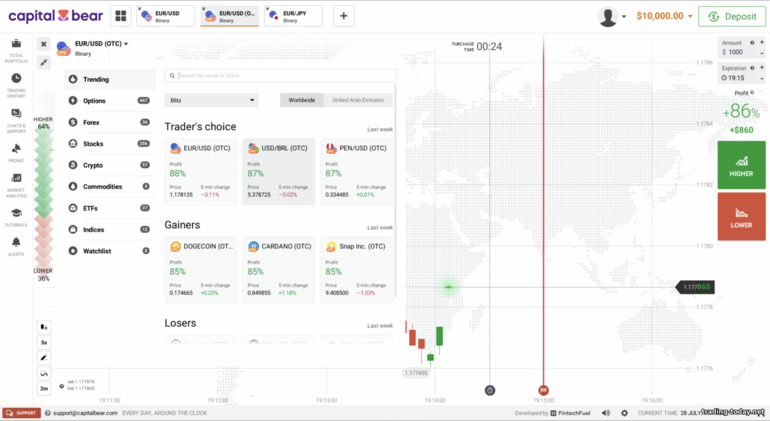

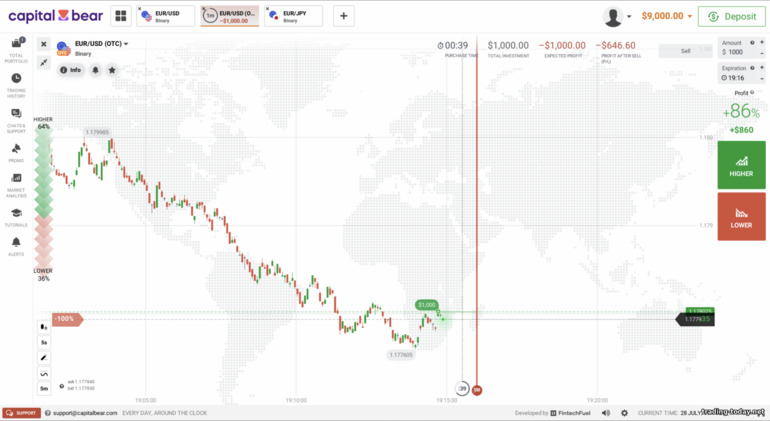
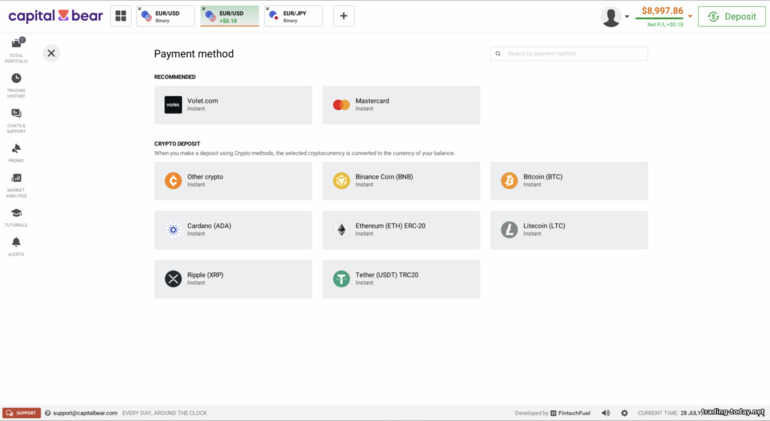



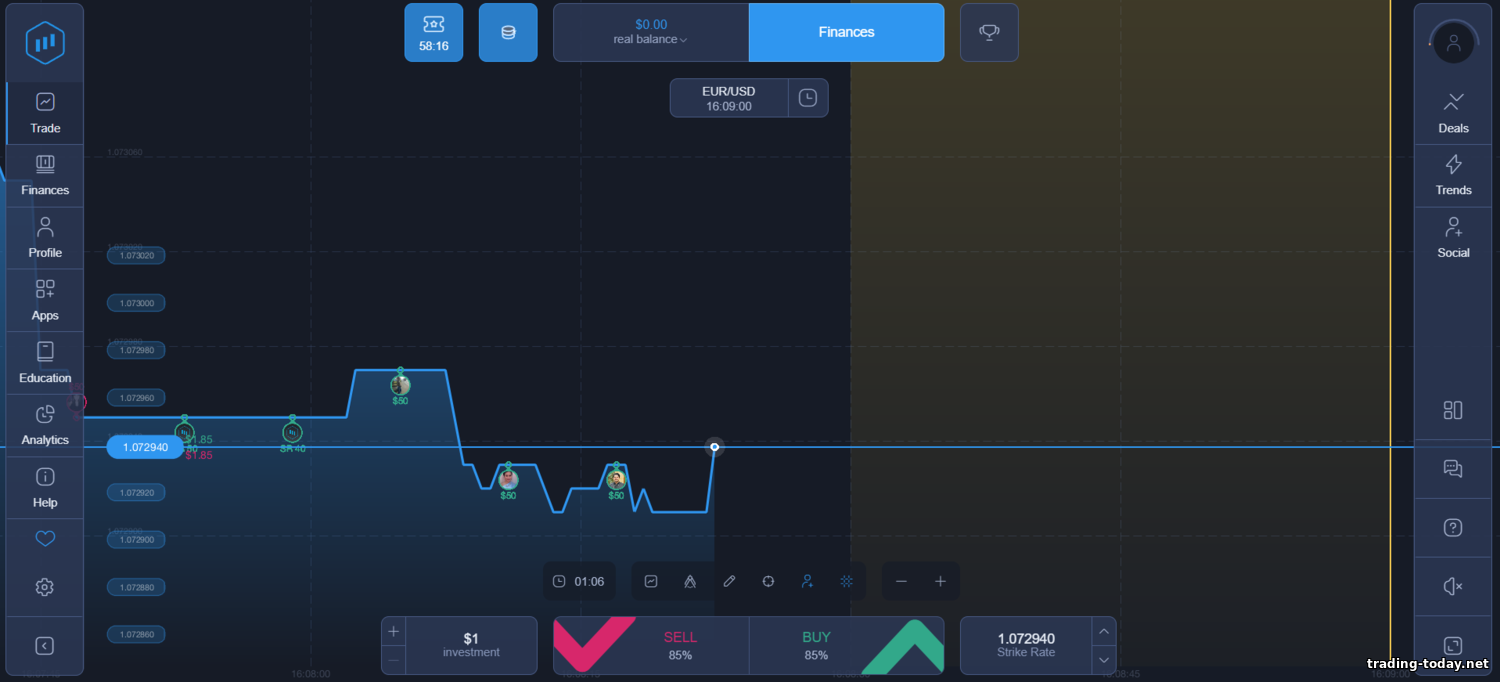


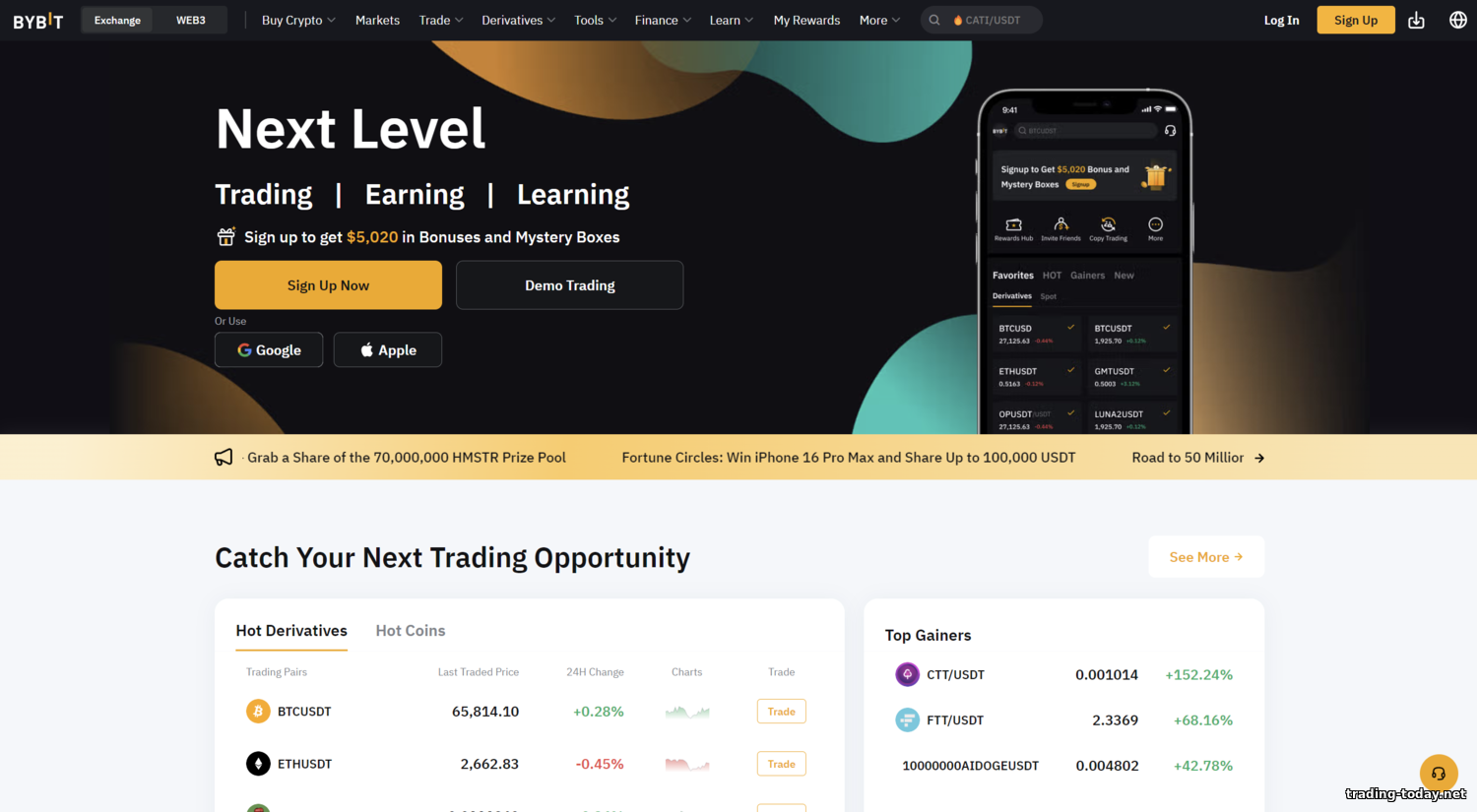




Reviews and comments